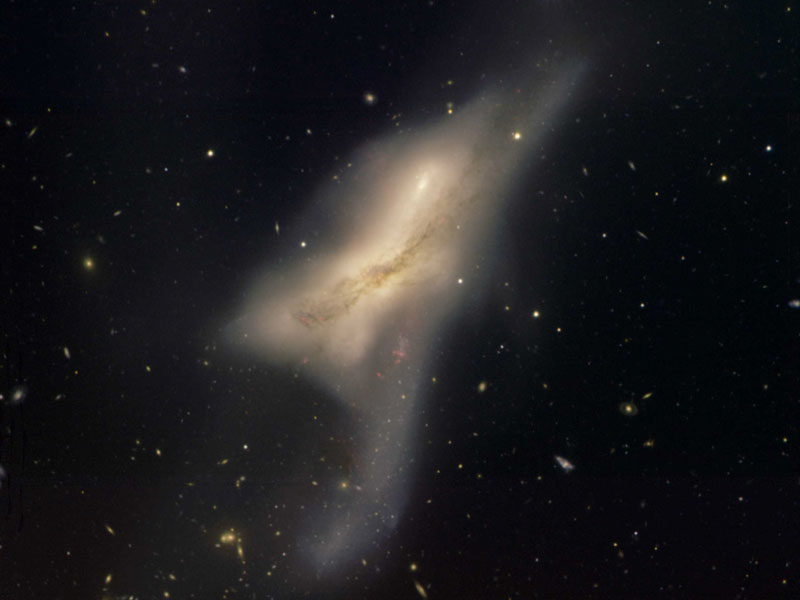Explanation: Is this one galaxy or two? The jumble of stars, gas, and dust that is NGC 520 is now thought to incorporate the remains of two separate galaxies. A combination of observations and simulations indicate the NGC 520 is actually the collision of two disk galaxies. Interesting features of NGC 520 include an unfamiliar looking tail of stars at the image bottom and a perhaps more familiar looking band of dust running diagonally across the image center. A similar looking collision might be expected were our disk Milky Way Galaxy to collide with our large galactic neighbor Andromeda (M31). The collision that defines NGC 520 started about 300 million years ago and continues today. Although the speeds of stars are fast, the distances are so vast that the interacting pair will surely not change its shape noticeably during our lifetimes. NGC 520, at visual magnitude 12, has been noted to be one of the brightest interacting galaxies on the sky, after interacting pairs of galaxies known as the Antennae. NGC 520 was imaged above in spectacular fashion by the Gemini Observatory in Hawaii, USA. Also known as Arp 157, NGC 520 lies about 100 million light years distant, spans about 100 thousand light years, and can be seen with a small telescope toward the constellation of the Fish (Pisces).
1999 2000 2001 2002 2003 2004 2005 2006 2007 2008 2009 2010 2011 2012 2013 2014 2015 2016 2017 2018 2019 2020 2021 2022 2023 2024 2025 |
Январь Февраль Март Апрель Май Июнь Июль Август Сентябрь Октябрь Ноябрь Декабрь |
NASA Web Site Statements, Warnings, and Disclaimers
NASA Official: Jay Norris. Specific rights apply.
A service of: LHEA at NASA / GSFC
& Michigan Tech. U.
|
Публикации с ключевыми словами:
colliding galaxies - сталкивающиеся галактики
Публикации со словами: colliding galaxies - сталкивающиеся галактики | |
См. также:
Все публикации на ту же тему >> | |
